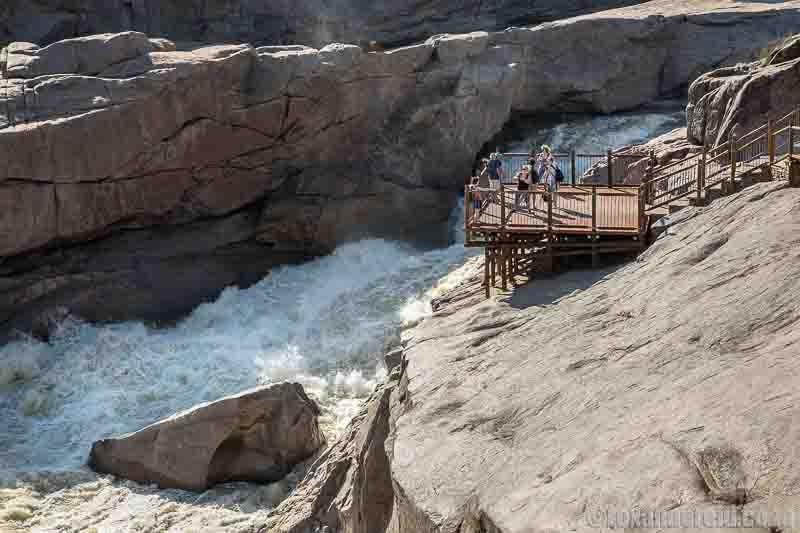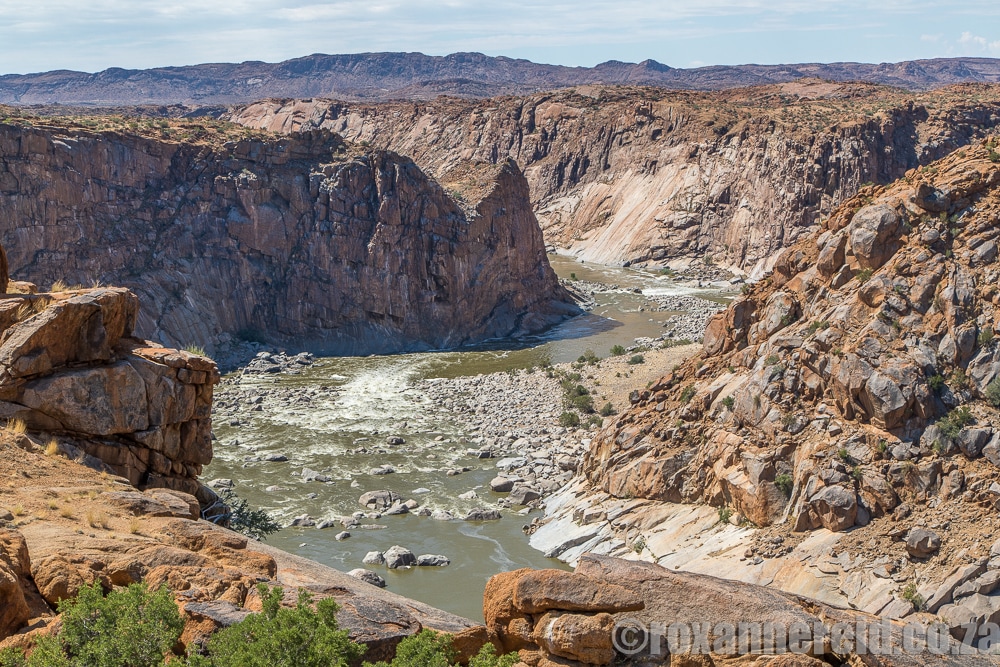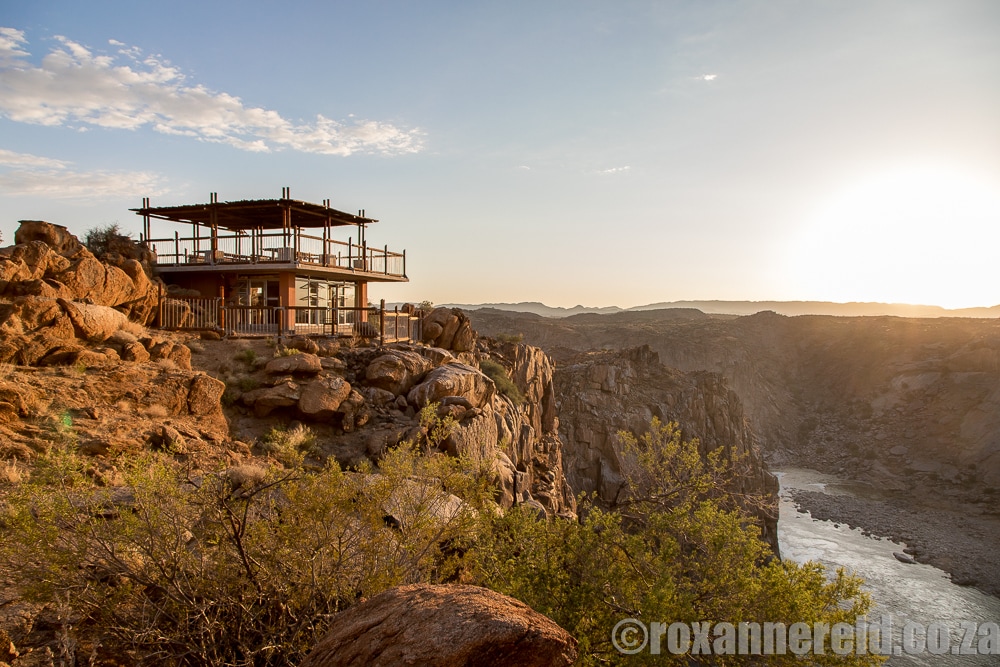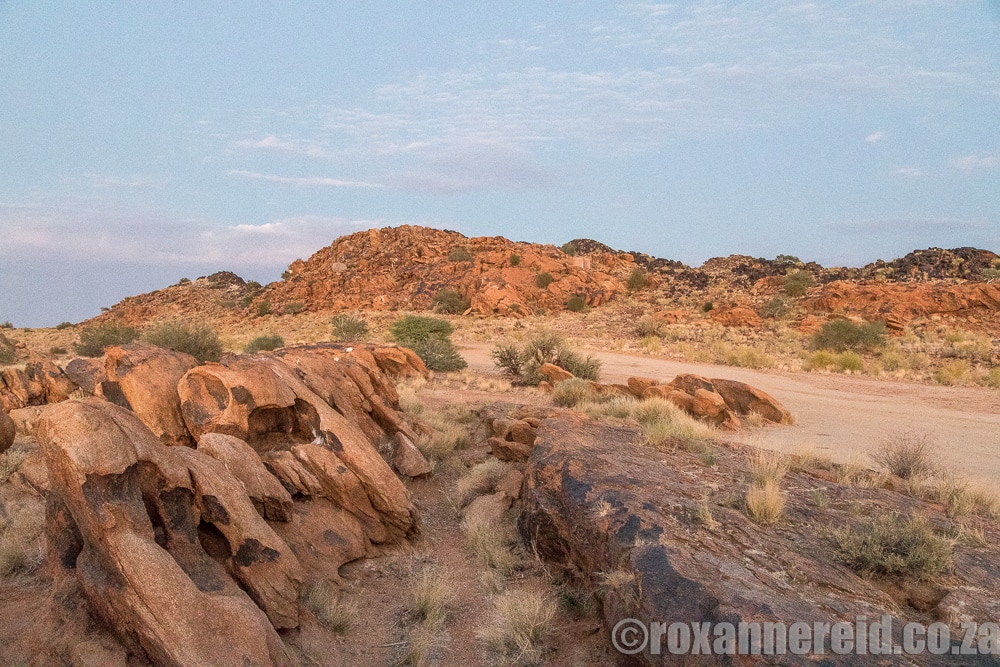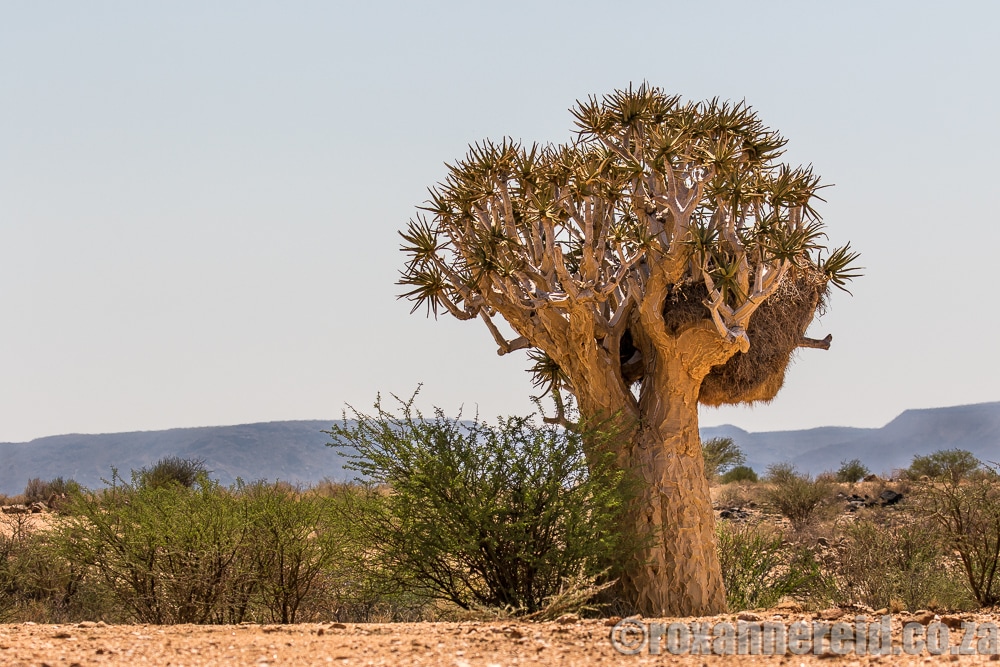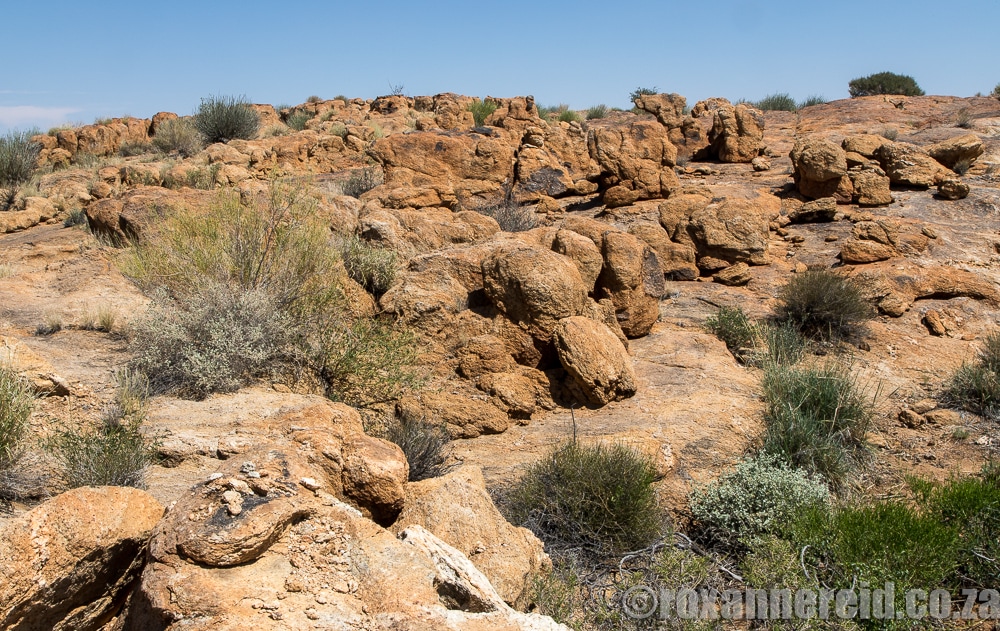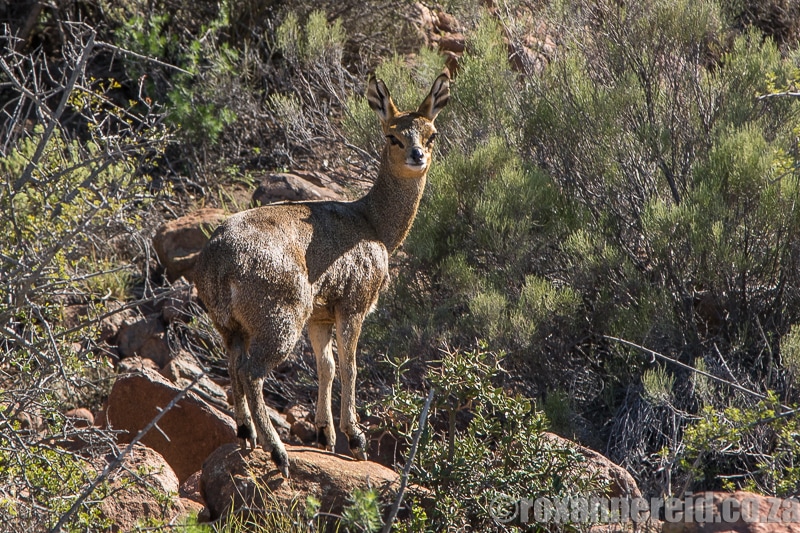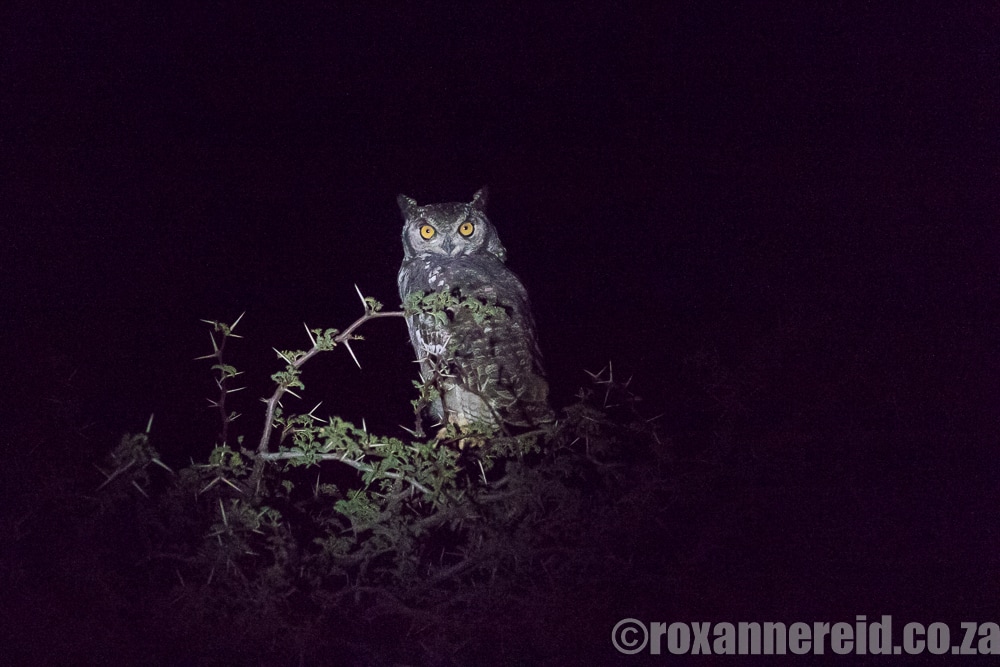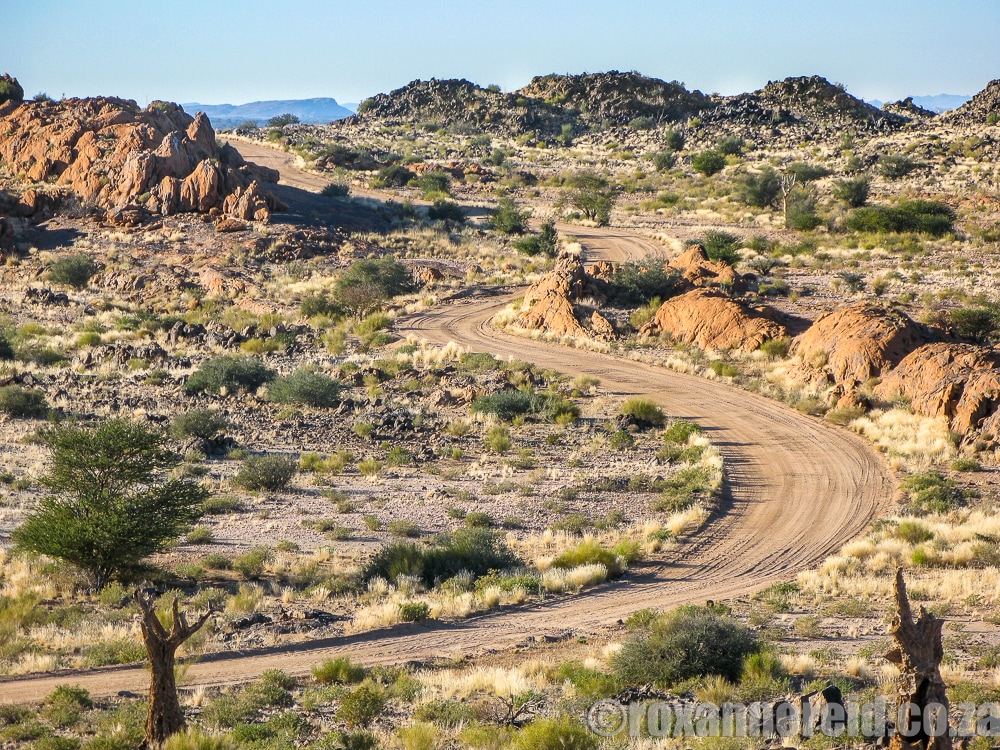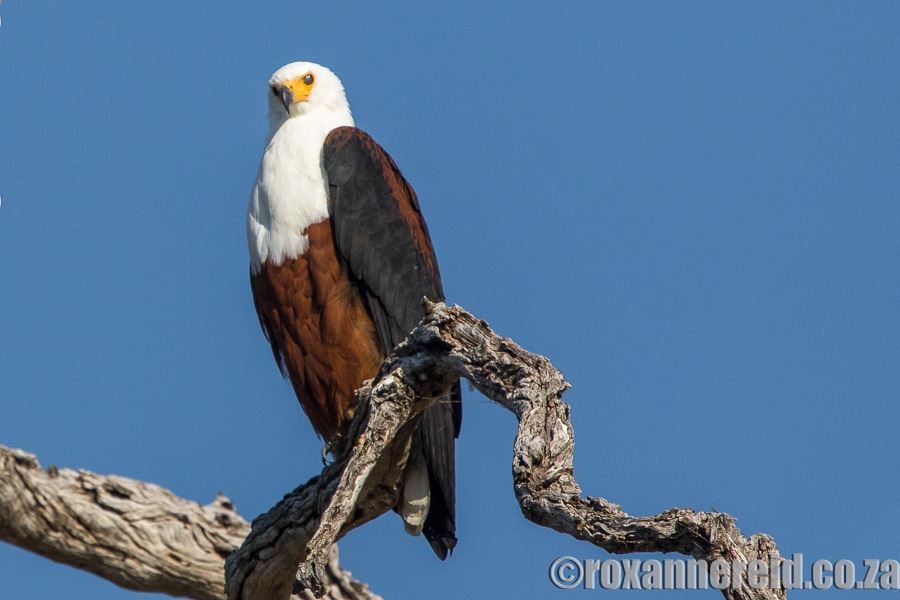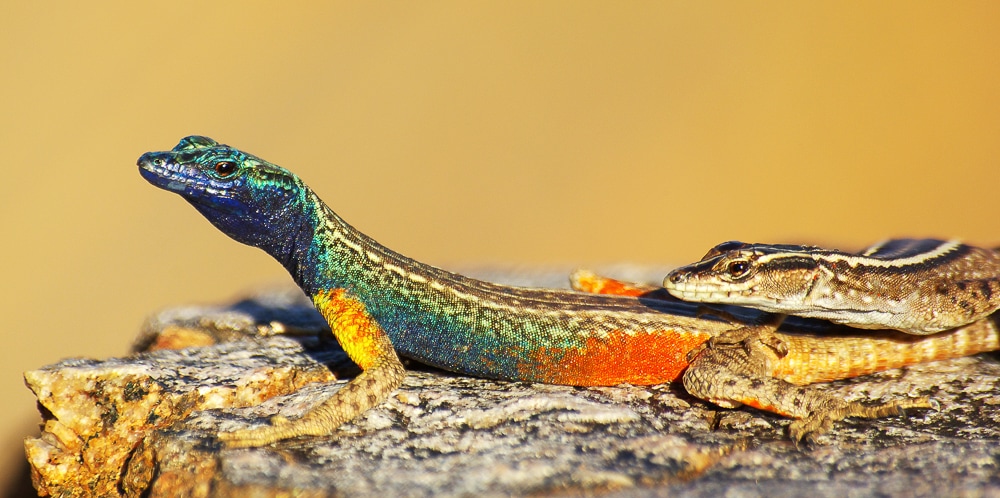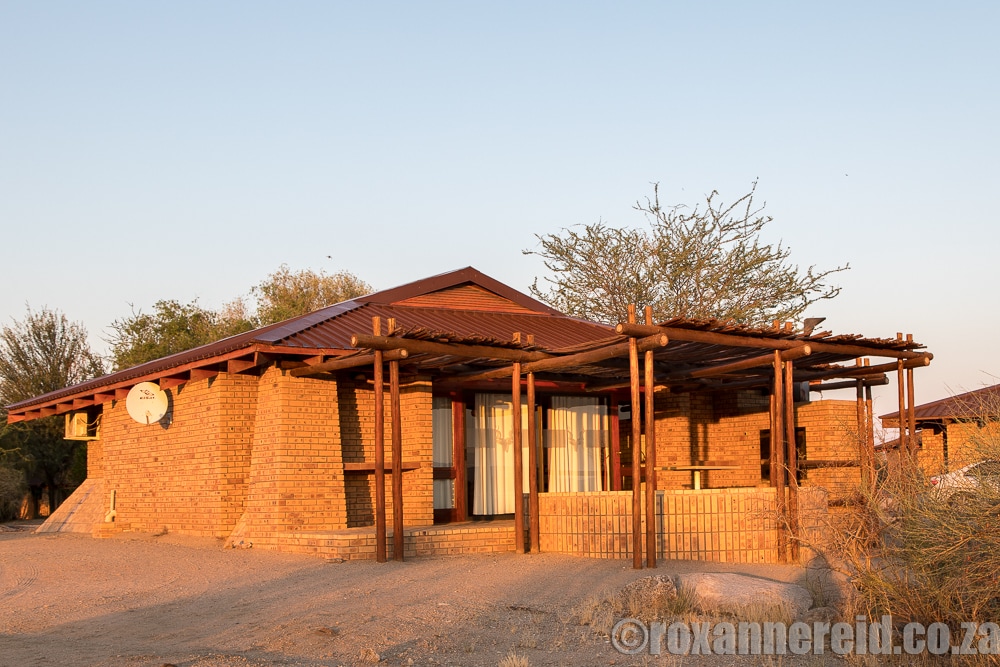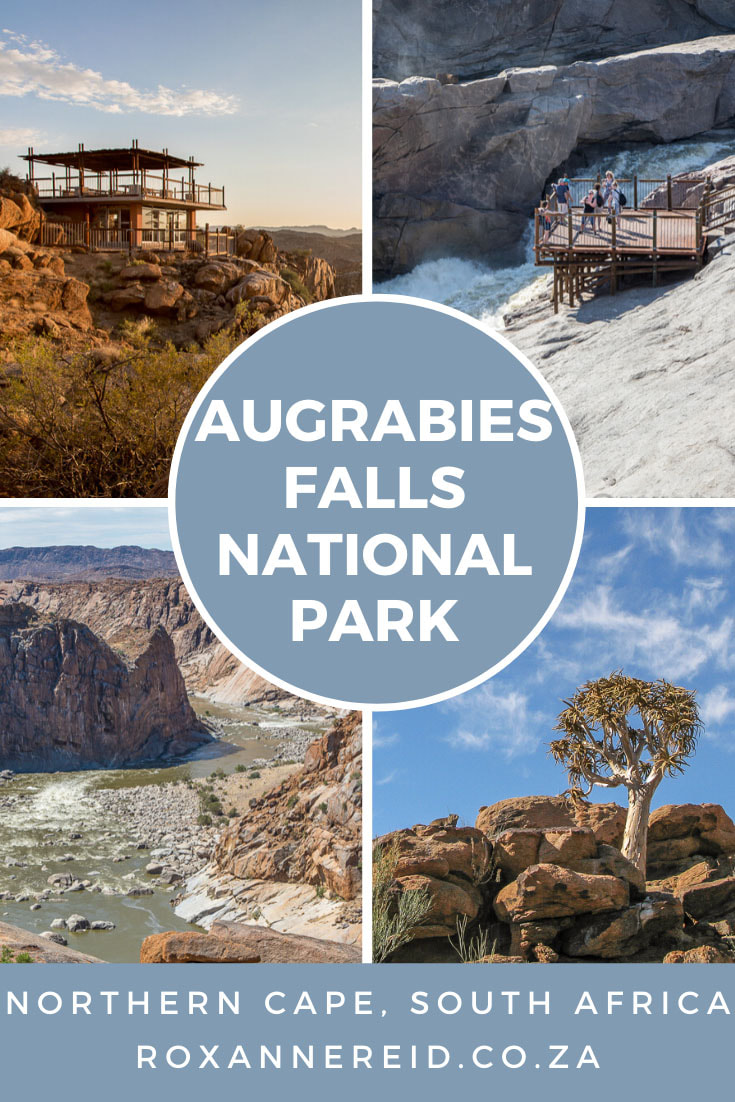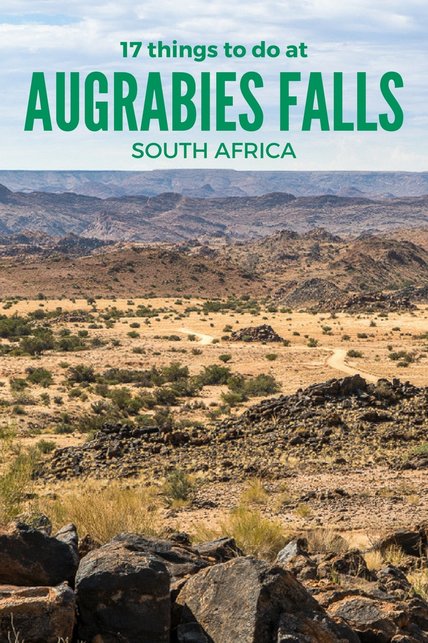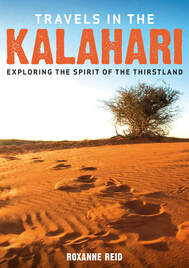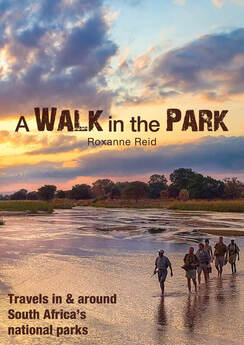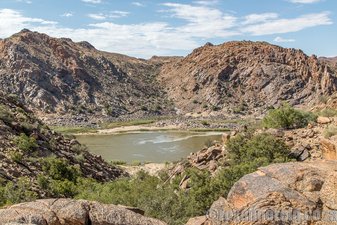
Some 120km west of Upington in the Northern Cape is a landscape that could be from another planet. Although the Augrabies Falls lures visitors here, you’ll also find arid-adapted animals and plants, fascinating rocks, hikes and more. Here are 17 things to do at Augrabies Falls National Park.
Go back along the boardwalk with your torch in the evening when the Falls are illuminated between 20:00 and 22:00. They’re softer, slightly more eerie at night than they are in the sunlight.
2. Climb Moon Rock
3. See the gorge
4. Spend a night at Gorge Cottage
See more photos and info about Gorge Cottage
5. Go rock spotting
6. Marvel at the quiver tree
7. Drive along Hartmann’s Loop
8. Watch a klipspringer
9. Take a hike
Walk the Ebony Trail that starts just past the day visitors’ site outside the main camp. It’s 2.8km and takes about an hour and a half. This trail is unusual in Augrabies’ hot, arid environment because it leads you along a shady path under indigenous trees like the ebony after which it’s named. ID tags enhance your experience. Take your binos because you’re bound to spot some bush birds and maybe even giraffe or eland.
Other hikes include the Dassie Trail (see point 2 above), the 2km Gorge Trail to Arrow Point and Twin Falls and back, and the full-on 36km overnight Klipspringer Trail that will take you three days and two nights. Note that it’s closed between October and March because of extreme heat.
10. Go on a guided night drive
Join a guide like Richard Okkers after dark for a night drive into the park. ‘You see more animals at night in summer because it’s too hot during the day,’ he said. ‘Even eland come to drink at the waterhole at night.’
And he was right. We saw two small-spotted genets, three spotted eagle-owls – ‘the male calls with two notes, the female with three,’ Richard told us – three scrub hares (white bellies), a Cape hare (grey belly) and a Smith’s red rock rabbit bobbing away from the noise of the vehicle.
We saw springbok, hartebeest, two pairs of klipspringer, a giraffe. Then gemsbok eyes glittering in the spotlight gave Richard a chance to explain that this arid-adapted species has a special organ that acts as a radiator to cool the blood that goes to the brain.
Richard recently saw an aardwolf on his night drive. ‘Sometimes we even see a leopard,’ he said.
11. See the stars
On your way back to camp on the night drive your guide will probably stop on a hill at Swartrante so you can marvel at the density of the Milky Way and a multitude of other stars in a very dark sky. But even if you look up from your braai at the campsite, you should be able to appreciate the stars that cluster so clearly above you in the clean, dry air.
12. Enjoy the landscapes
13. Go mountain biking
If you’re a keen biker, you can knock yourself out by riding any of the roads in the park. Don’t go off-road because if you’re caught you’ll face a fine. Your rewards – apart from the exercise-induced endorphine rush – are the changing landscape and interesting rock formations.
14. Go birding
15. Get to know the Augrabies flat lizard
16. Go rafting
Join a guided half- or full-day rafting trip on the Orange River at Augrabies, with grade 2 and 3 rapids. Or if you’re looking for a longer adventure, book a 4-day canoe trip on the river. Google Kalahari Adventures for more info.
17. Stay over
Did you enjoy the article? Pin this image!
5 arid parks worth visiting in the Northern Cape
Copyright © Roxanne Reid - No words or photographs on this site may be used without permission from roxannereid.co.za
